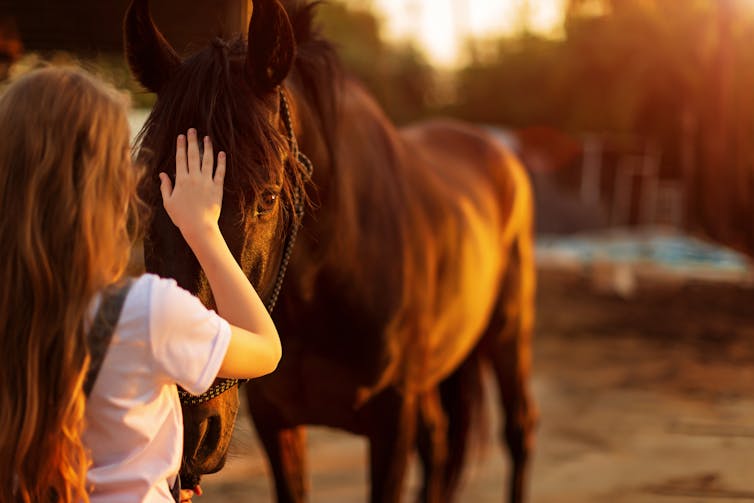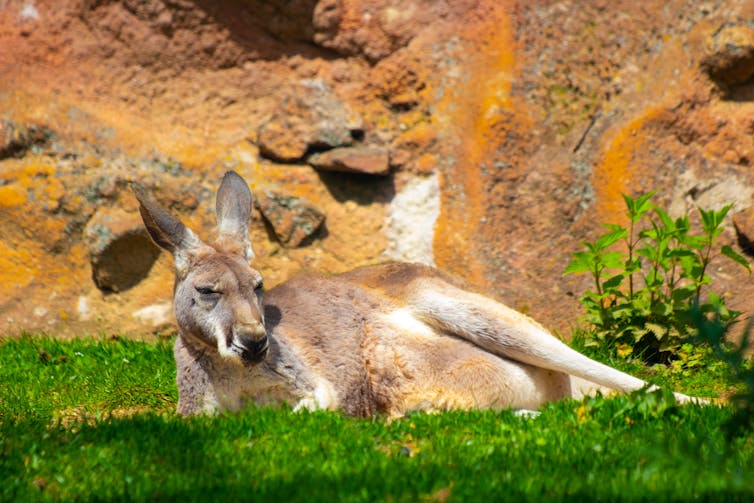Source: The Conversation (Au and NZ) – By Melissa Starling, Postdoctoral researcher, University of Sydney
How do we know when animals who don’t have tails are happy? — Goldie Rose, aged 5.
Great question Goldie! Animals use their tails for steering, holding, balancing and swimming, but they also use them as a way to talk to each other. A dog wagging its tail is one example, and we usually read a waggy tail as a sign that a dog is happy.
But that’s not the only way dogs can show they’re happy, and there are lots of animals that don’t have tails or don’t use them to talk to each other.
Different animals have different ways of showing they’re happy, so it helps to know about the animal you’re interested in.
Read more: Is your dog happy? Ten common misconceptions about dog behaviour
For example, cats purr when they’re happy (although some cats also purr when they are in pain). Guinea pigs whistle when they are excited and purr when they are content. Rabbits twitch their noses when they are content and they also can make a purring sound by grinding their teeth. This usually means they are happy, but like cats, sometimes they do it loudly when they are in pain.

Ferrets chirp when they are happy and excited, horses will point their ears towards you and have a relaxed mouth, and parrots sing, whistle or make a grinding, purring sound with their beak when they are content.
So, there are a lot of different ways animals can show they are happy, but sometimes they do the same thing when they are in pain. How confusing!

Often we can get a good idea if they are happy or unhappy by looking at how they are behaving in general.
A cat that purrs because it’s happy may also be winding her body around your legs, or relaxed in your lap, have her tail high in the air, or roll over on her back. All this shows she is trusting and interested.
Read more: Don’t let them out: 15 ways to keep your indoor cat happy
Likewise, a rabbit grinding its teeth while relaxing will also likely be stretching its body out as well. You can tell how relaxed a rabbit is by how stretched out it is while resting. If a rabbit is in pain, it tends to hunch up and squeeze its eyes half shut like it is wincing. Animals that are relaxed and not tense are usually happy and content.
We can also get an idea of how happy an animal is by what they do. Play is one of the most reliable ways to tell if an animal is happy, as only happy animals play. Happy, playful animals will jump into the air, pounce, kick their feet up while they run, and generally be more energetic than they need to be.
Read more: 10 things we do that puzzle and scare horses
Lastly, we can see what animals like to do by what they choose to come back to over and over again. If your animal chooses to lie in the sun or look for tasty treats or dig holes, then you know when they are doing that, they are probably happy.
So, to know when an animal is happy, we need to look at more than what one body part is doing, and we might need to watch them to get to know them.
To be a good friend for our animals, we should give them the freedom to choose their own activities, and that will show us what they like. Happy animal-watching!
Hello, curious kids! Do you have a question you’d like an expert to answer? Ask an adult to send your question to curiouskids@theconversation.edu.au
– ref. Curious Kids: how can we tell if an animal is happy without a wagging tail? – https://theconversation.com/curious-kids-how-can-we-tell-if-an-animal-is-happy-without-a-wagging-tail-150374









